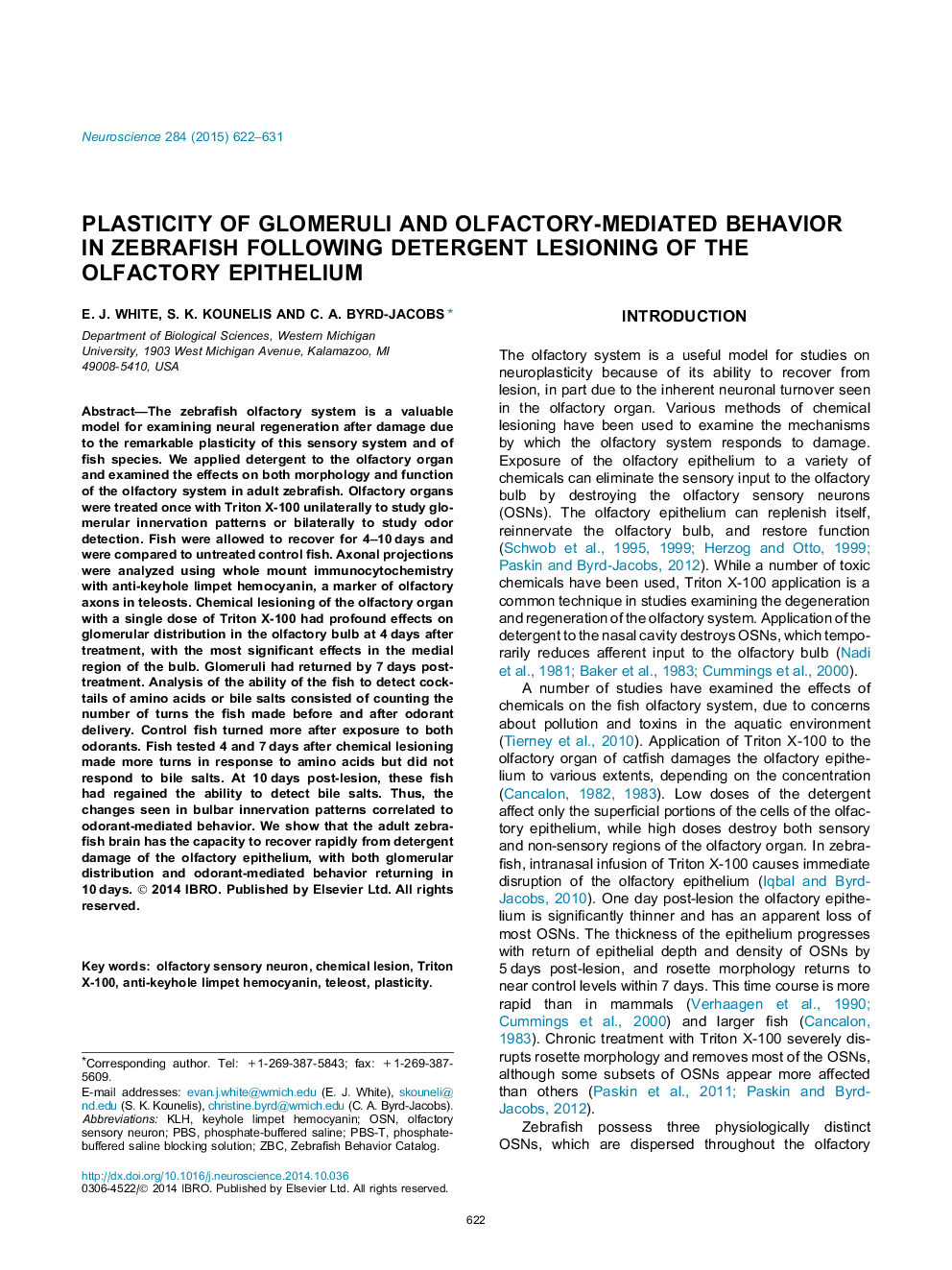| کد مقاله | کد نشریه | سال انتشار | مقاله انگلیسی | نسخه تمام متن |
|---|---|---|---|---|
| 6273030 | 1614792 | 2015 | 10 صفحه PDF | دانلود رایگان |
- Detergent ablation of the olfactory organ disrupts glomeruli in the olfactory bulb.
- In general, glomeruli in the medial region of the bulb are the most affected.
- By 7Â days most glomeruli are morphologically similar to unlesioned controls.
- Fish retain the ability to detect amino acids after Triton X-100 treatment.
- Fish lose detection of bile salts, but they regain olfactory acuity by 10Â days.
The zebrafish olfactory system is a valuable model for examining neural regeneration after damage due to the remarkable plasticity of this sensory system and of fish species. We applied detergent to the olfactory organ and examined the effects on both morphology and function of the olfactory system in adult zebrafish. Olfactory organs were treated once with Triton X-100 unilaterally to study glomerular innervation patterns or bilaterally to study odor detection. Fish were allowed to recover for 4-10Â days and were compared to untreated control fish. Axonal projections were analyzed using whole mount immunocytochemistry with anti-keyhole limpet hemocyanin, a marker of olfactory axons in teleosts. Chemical lesioning of the olfactory organ with a single dose of Triton X-100 had profound effects on glomerular distribution in the olfactory bulb at 4Â days after treatment, with the most significant effects in the medial region of the bulb. Glomeruli had returned by 7Â days post-treatment. Analysis of the ability of the fish to detect cocktails of amino acids or bile salts consisted of counting the number of turns the fish made before and after odorant delivery. Control fish turned more after exposure to both odorants. Fish tested 4 and 7Â days after chemical lesioning made more turns in response to amino acids but did not respond to bile salts. At 10Â days post-lesion, these fish had regained the ability to detect bile salts. Thus, the changes seen in bulbar innervation patterns correlated to odorant-mediated behavior. We show that the adult zebrafish brain has the capacity to recover rapidly from detergent damage of the olfactory epithelium, with both glomerular distribution and odorant-mediated behavior returning in 10Â days.
Journal: Neuroscience - Volume 284, 22 January 2015, Pages 622-631
